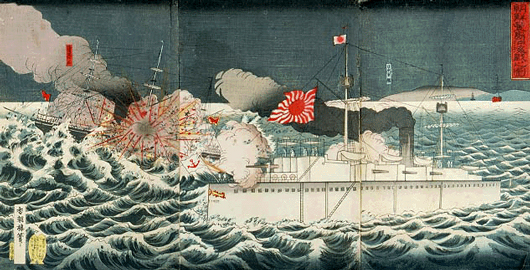< Female line-engraving drawing in
Gonnersdorf ruin, Germany >
Last
time, we looked at the movable statues in the last stage of the glacial epoch.
From
this time, we look at the brilliant cave paintings of a glacial epoch.
The
Fine arts suddenly bloomed on the ground of arctic cold.
First,
I do the last supplementary explanation. Last time, there was an opinion that
the Venus image of Nebra is visible to a penis. The above figure is the
line-engraving drawing of the clay stone in Gonnersdorf ruin that were making
the same Venus statues as Nebra. Two women that have an arm were drawn on this
stone. Thus, it is guessed that the Venus statue is the thing developed from
the female image. Thank you for the precious opinion.
前回は、氷河期最後を飾った動産美術を見ました。
今回からは氷河期の見事な洞窟壁画を見ていきます。
突如として極寒の地に美術が花開いた。
最初に、前回の補足説明をします。前回示したネーブラのビーナス像が男根に見えるとの指摘がありました。上図はネーブラと同じビーナス像を作っていたゲナスドルフ遺跡の粘土板の線刻画です。これには腕を有する二人の女性が交叉して描かれています。このようにビーナス像は女性像から発展したものと推測されます。貴重なご意見ありがとうございました。
< horse 、 Chauvet cave >
Cave
paintings appeared a little later than movable statues for a while. There is no
painting outside a cave until the last stage comes. The oldest thing is in
Chauvet cave in south France, 31000 years ago. This limestone cave amounts to
400 m in length. In the inner wall, there were
the colored pictures of 300 over, the line-engraving drawing of 300 over, many
signs, and many handprints.
A
horse, the extinct cow, a bison, a bear, a mammoth, a reindeer, the owl, the
lion, the hyena were painted on the surface of the wall. The main paints the
black of charcoal and the red of Ocher. There is also a room unified in each
color. The animal that is running in groups is drawn, and two fighting
rhinoceroses that were drawn by the forcible outline look vividly.
洞窟美術は動産美術より少し遅れて現れます。末期になるまで洞窟外の壁画はありません。最古のものは南フランスのシャーベット洞窟で、31000年前に遡る。この鍾乳洞は全長400mに達する。300点以上の彩色画、ほぼ同数の線刻画、多くの記号、手形が内壁に見つかった。
馬、絶滅した牛(オーロックス)、バイソン、熊、毛犀、マンモス、トナカイ、フクロウ、またライオン、ハイエナが壁面に描かれていた。顔料は木炭の黒とオーカーの赤が主でした。それぞれの色で統一している部屋もある。群れ走っている動物が描かれ、また力強い輪郭線で描かれた戦う犀などは生き生きしている。
< fighting rhinoceroses 、 Chauvet cave >
Secondly,
the cave painting is in the Cosquer cave facing the Mediterranean in France. It
is divided into many handprints drawn 27000 years ago and the animal group
drawn 19000 years ago. Although many handprints are seen in other caves, the
paint included in the mouth is sprayed on the hand put on the wall, and a
picture is made. A penguin and a seal are rare, although the painting animal is
a lot of horses in common with other caves.
The
famous Lascaux cave painting appears in France 17000 years ago. The Lascaux
cave is one of the 30 caves of the gorges in the limestone region. The stone
tool and a bone implement of 100,000 points are found from this whole region. Although
there is a trace of a life, there is a cave without paintings, and the caves
like this is about half. The Lascaux cave consists of three
rooms, is about 70 m in full length, and the largest places“The hole of a bull”are a hole of 9m wide, and Fig. 1.
次に、洞窟絵画はフランスの地中海に面したコスケール洞窟にある。27000年前に描かれた多くの手形と19000年前に描かれた動物群に分かれる。手形は他の洞窟でも多く見られるが、手を壁にあて、そこに顔料を吹き付けて描く。描かれている動物は他の洞窟と同様に馬が多いが、ペンギンとアザラシはめずらしい。
17000年前頃、有名なラスコー洞窟絵画(フランス)が出現する。ラスコー洞窟は石灰岩地帯の渓谷にある30近い洞窟の一つです。この一帯から10万点の石器や骨角器が見つかっている。生活の痕跡や遺物はあるが絵画のない洞窟はおおよそ半数ある。ラスコー洞窟は3部屋からなり、全長70m程で、最も広い所は幅9mの「牡牛のホール」、図1である。
< fig.1 The hole of a bull 、Lascaux cave >
The
side and the ceiling side of a cave mainly have many hundreds of horses, cows,
deer, and bisons, and there is a picture of a maximum of 5.5m cow in them. Moreover,
there are the colored picture and line-engraving drawings that describe a goat,
a sheep, an antelope, a human being, and a geometrical pattern. These numbers
are 2000 points. There are 500 handprints that man sprayed paints. Red clay and
charcoal were melted and mixed with animal fat, blood, and sap, and black, red,
yellow and tea, and brown paints were made. It is thought that the painting
brush uses the moss, the hair of an animal, and a wooden branch or one’s own
finger.
洞窟の側面と天井面には、数百の馬、牛、シカ、バイソンが多く、最大5.5mの牛の画がある。また山羊、羊、かもしか、人間、幾何学模様の彩色画、線刻画が2000点ある。顔料を吹き付けた人間の手形が500点ある。赤土・木炭を獣脂・血・樹液で溶かして混ぜ、黒・赤・黄・茶・褐色の顔料を作っていた。苔、動物の毛、木の枝をブラシがわりに、または指を使いながら壁画を描いたと考えられる。
< fig.2 A bull and a horse 、Lascaux cave >
Fig. 2
in the hole of a bull is painted over picture. Fig. 2 in the hole of a bull was painted
over some pictures repeatedly. The first
pictures that was painted was a horse group of gray with running fast, on lower
side. Subsequently, it was one horse that has a black mane in the center of the
left, and the red body. Subsequently, it was a bull realistically was drawn by
the black outline. Finally, a deer was painted in the pictures by only red on
lower right.
牡牛のホールにある図2は重ね描きされている。最初に描かれたのが下部の灰色の疾駆する馬群. 次いで左中央の黒いたてがみと赤い胴体を有する一頭の馬、次いで黒の輪郭線で写実的に描かれた牛、最後に右下の赤一色の鹿が書き加えらえた。
< fig.3 A bison and a person、Lascaux cave >
Fig. 3
shows the only scene in which a person appears. It is rare that a person
appears in the fine arts of the Old Stone Age, and even if drawn, it is
childish. In this picture, there is a bison that a spear is stuck in and from
which an internal organ fall out, and the person fall down before that.
On the
lower side, there is a spear and a stick (probably an atlatl) that was attached
a bird decoration. The person's head is like a bird with a beak, it is seen
that 4 fingers and the erect sexual organs.It seems to have some kind of message in
this picture. The interpretation is a
hunting scene, a transformer state of a shaman, a ceremony, etc.
Next
time, I look at the last of cave fine arts and the shining time.
図3は人物が登場する唯一の場面である。旧石器時代の美術に人物が登場するのはめずらしく、描かれていても稚拙である。この絵には、投げ槍が刺さり内蔵が飛び出したバイソンの前に人物が倒れている。その下には投げ槍と鳥飾りを付けた棒(槍投器らしい)が見える。人物の頭はくちばしを持った鳥形で、指は4本で勃起した性器が見える。この絵にはメッセージがあるように思え、狩猟場面、シャーマンのトランス状態、儀礼目的などの解釈がある。
次回は、洞窟美術の最後を飾るものを見ます。



















![失業率推移、world、 the unemployment [jobless] rate 失業率推移、world、 the unemployment [jobless] rate](https://blogger.googleusercontent.com/img/b/R29vZ2xl/AVvXsEiU9pIayucjw8YkzYobUXIYcRAtGOifSf5GNJ9Nmln7-J3Q3l0l86Dy2KSJU5U3ozJVyhPTA_WURdKSAtkuXBkAQfZw9EjQ5okIQi8cfDWEKPJNbryUecd4lKsBghgRafZeYRolLeWajqM/s1600/%25EF%25BC%2592%25E3%2580%2580%25E5%25A4%25B1%25E6%25A5%25AD%25E7%258E%2587%25E6%258E%25A8%25E7%25A7%25BB.jpg)
![若者失業率、world、 the unemployment [jobless] rate、 youth 若者失業率、world、 the unemployment [jobless] rate、 youth](https://blogger.googleusercontent.com/img/b/R29vZ2xl/AVvXsEiqye6KIi4r4g-chcdLO3CaA4XssyhxN-zSyZBLWkKrTJ17lks-5JzoGZ4ZnLfc_1D1Y9-fxCyHcMmwd7YYcQ5DL-RaC0K-C5nRRpYibFc_lJqmSsz7h51ZxzZarZAeNZvbJITAPd7IjAQ/s1600/%25EF%25BC%2593%25E3%2580%2580%25E8%258B%25A5%25E8%2580%2585%25E5%25A4%25B1%25E6%25A5%25AD%25E7%258E%2587.jpg)







